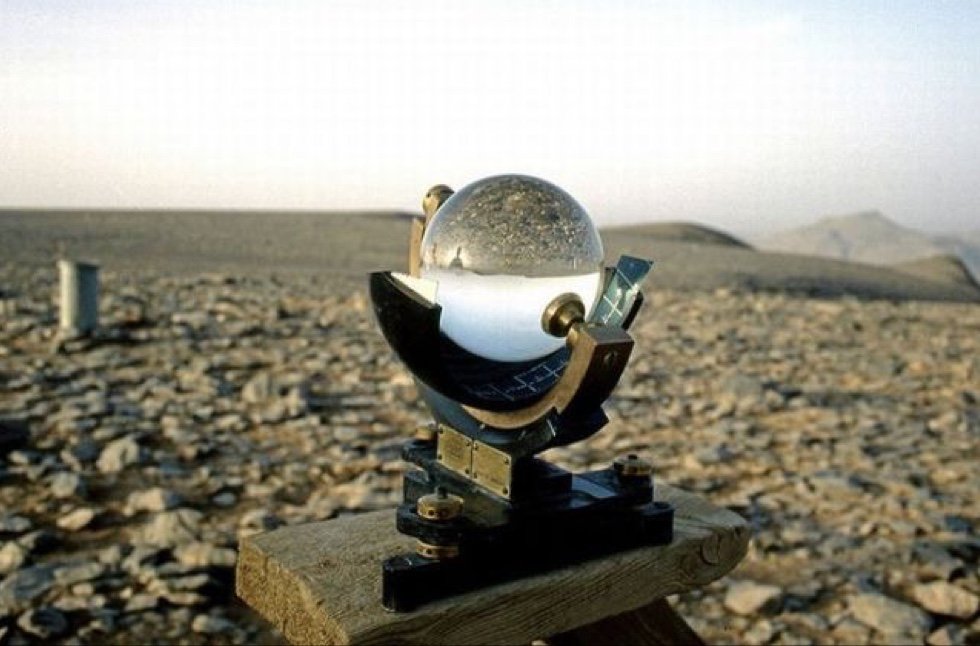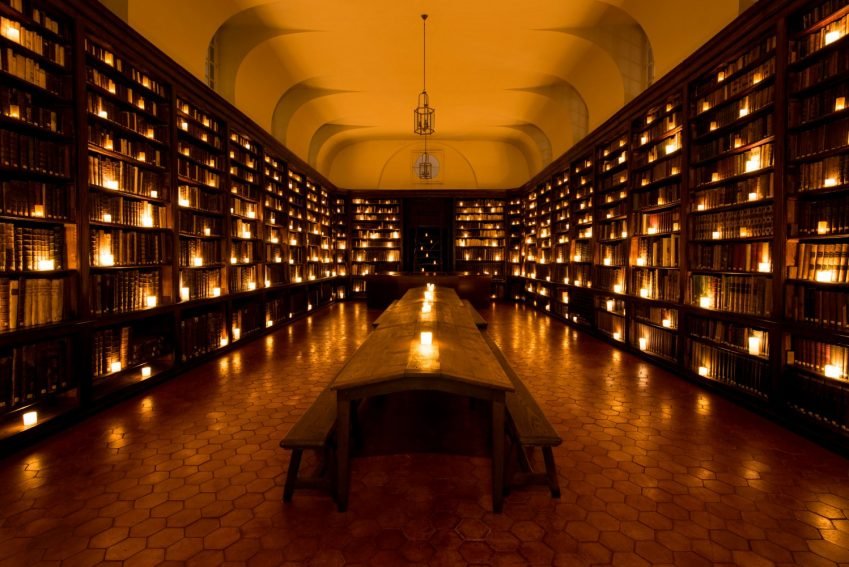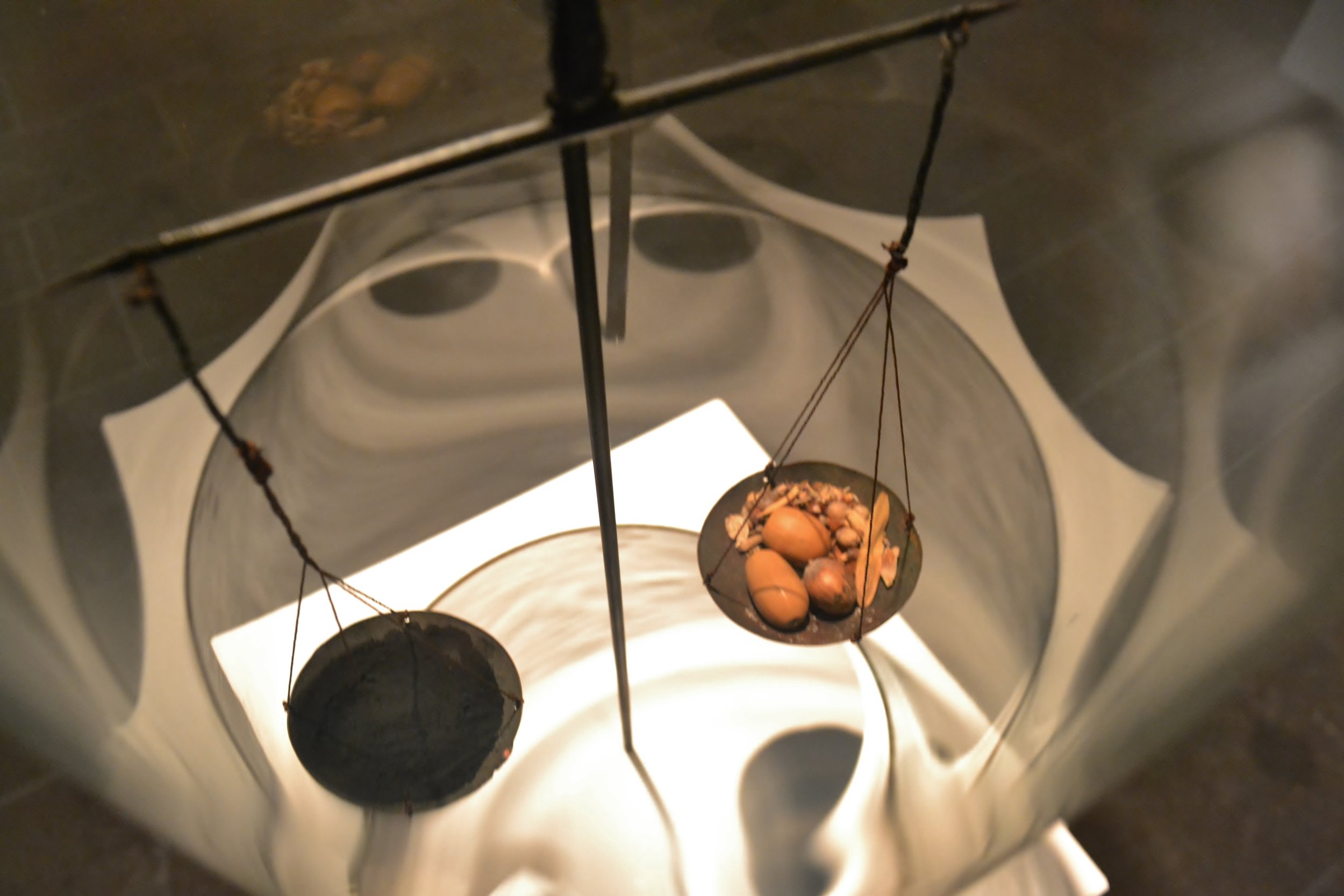Crystalline
Exhibition Series and Artwork
Crystalline: A project exploring the European Space Agency's (ESA) Solar Orbiter Mission. This installation brings the elements of contemporary engineering together with prehistory in the use of carbon and charred bone.
Crystalline is a project that addresses the demise of glaciers by merging contemporary engineering with elements of prehistory. Through collaborations with the European Space Agency (ESA) and NASA, Siobhán McDonald utilizes solar technologies in a series of artworks to depict the Sun's dynamics, capturing both its explosive power and serene beauty. A crucial element of this work is the use of NASA STIX X-ray technology. By adapting special NASA solar lenses for the project, McDonald explores realms and perceptions of reality, evoking the depths of the past.
The Guardian - Review 2017
Weaving themes of voyaging and perilous expeditions, the artwork commemorates the launch of the European Space Agency's (ESA) Solar Orbiter Mission in 2020. Bridging history, the exhibition connects the journey of the Solar Orbiter (2022) with the Franklin expedition (1845).
Utilizing contemporary engineering technologies and materials from ancient caves to explore time.
On 10 February 2020, Solar Orbiter—a joint European Space Agency (ESA) and NASA mission—was launched to journey to an unexplored part of our Sun. Since 2017 McDonald has collaborated with material scientists at ESA in the creation of a series of works to mark the Solar Orbiter launch and to explore the Sun's finest unseen moments, exploring its past, present and future. The Times - Review
SOLAR GAZE, A painting series, created using pigment made from charred bone of over 1000 species. Solar black; drawing on Japanese paper.
Composed of foam substrates and individually painted with Solar White, the Solar Orbiter pigment, McDonald cured the surfaces of each sculpture at high temperatures to create a motif of cracked and disjointed cartographies. They exude an air of disrupted beauty and reference the typography created over centuries by the moving glaciers as they melt.
‘Crystalline detail’
Through her work with the European Space Agency (ESA), McDonald explores the workings of the Sun with Daniel Müller and Joe Zender, addressing our star’s explosive power and serene beauty. In a series of interventions McDonald experiments with the scale and physical nature of the Solar Orbiter spacecraft down to its component parts; ranging from the hard metal structures to an exterior sheath that is used to protect against the heat of the Sun. This exterior sheath is an industrial material Solar White which bonds to the titanium heat shield of ESA’s Solar Orbiter and mirrors the crushed animal bone that Stone Age people used to make cave paintings. Inspired by this clear line between Solar Orbiter and prehistory, McDonald collaborated with the material scientists at Enbio in creating Crystalline.
Crystalline: Installation shot: Centre Culturel Irlandais, March 2018
‘At the Edge of Visibility’ 2016. 4 minute film by Siobhan McDonald. Shot in the Arctic Circle in 2015. Edited by Christopher Ash. Sound composition by Irene Buckley containing sounds collected in the Arctic by Siobhan, sounds of dying glaciers recorded by Professor Chris Bean and sounds recorded in space by ESA.
At the Edge of Visibility (2016) 4 minute, Premiered at Deutsches Hygiene-Museum ‘Shine on me’ curated by Katherine Nichols.
By 1823 the North American Arctic was still the last undiscovered ecosystem on the planet. It was a landscape so cold that it fractured everything it penetrated, including the stones. It was uncharted, unclaimed territory and Europeans had perished in it miserably. In 2015 the artist embarked on an expedition to explore this beautiful and vital Arctic ice which holds a memory that extends for millions of years into the past. At the Edge of Visibility explores the slow workings of geological processes found deep in permafrost, meditating on the sentience of ice.
The Guardian - Review
While in the Arctic I had taken along a heliograph, a device that was historically used to record the Sun. The heliograph, attached to the binnacle of the expedition ship, creates a response to the melting glaciers by recording a score of the Sun’s track at the summer solstice. Recorded messages and pulses registered as the Sun moved through the sky on 21 June to produce a series of notations for the soundtrack. The burn holes created are photographic in the strictest sense, as each mark is a small black Sun, and each dot is a repeat pattern of the Sun’s image scaled down many million times on its journey to the Earth.
“Beamed into space’ heliograph ‘score’ of the Sun’s track for the melting glaciers. The piece also contains whistlers collected at European Space Research and Technology Centre at ESA.
At the Edge of Visibility (2016)soundtrack, field recordings in space
“The Arctic taught me that sound waves are only a tiny aspect of the limitless vibrations that are untapped in the world. I also made infrasound (low-frequency) recordings with seismology equipment. I worked with composer Irene Buckley to develop a heliograph ‘score’ of the Sun’s track for the melting glaciers. The piece also contains whistlers collected at European Space Research and Technology Centre (ESTEC) at ESA. “McDonald works across a wide range of data, using every tool in her scientific and artistic repertory to inform and persuade us that the pace of deep time and geological change may still have lessons for us. McDonald asks us, instead, to look at the effects of imbalance, to listen to the drips of the dying glaciers, to witness the impacts of global warming in Crystalline…” ‘Born of a Singularity’,[1] Art and our position in the ecosystem. Catherine Marshall, February 2018
The week the sun touched the earth’ (2022)
Oil painting, film and easel
THE WEEK THE SUN TOUCHED THE EARTH by artist Siobhán McDonald, at the Irish Cultural Centre in Paris, pay tribute to the strangeness of our universe, when the sun meets the earth, especially during magnetic storms. And also to the beauty of matter and light, explored by the Solar Orbiter satellite. https://www.centreculturelirlandais.com/en/whats-on/exhibitions-events/siobh%C3%A1n-mcdonald-2
The exhibition weaves together themes of solar storms though the unifying perspective of deep time. McDonald use’s Ireland’s rich documentary and scientific heritage through the study of the corpus of Irish medieval chronicles. These represent annual chronicling of major events, originally recorded in major monastic foundations across Ireland, from the sixth century.
THE WEEK THE SUN TOUCHED THE EARTH premiered at The Centre Culturel Irlandais in 2022. Presented in the Old Library, the project depicts ancient and future solar storms in Ireland by bringing together echoes from different fields – quotations, mythology and language from the historic chronicles known as The Irish Annals, as well as contemporary dance and empirical cosmic data.
Through a series of enquiries, McDonald explores the differing scales of impact the Sun’s presence has on the Earth. The idea came about after studying solar storms recorded in the rich corpus of Irish medieval chronicles of early medieval Ireland in tandem with NASA images of the sun made accessible via digital archives. The cultural and linguistic aspect of the project is informed by the cultural history, quotes, mythologies and languages from the Irish Annals.
https://www.sciencesetavenir.fr/decouvrir/agenda/la-semaine-ou-le-soleil-a-rencontre-la-terre_162941
This 5-min film projection uses special NASA solar lenses adapted for this project to explore realms and perceptions of reality to conjure up a deep past. It also aims to capture the act of looking at solar storms to evoke the momentous cycles of solar activity whose magnetic fields have a direct impact on our weather.
“Like a passage into the unknown” ‘Delicately placed on an easel, in the venerable library of the Irish cultural center in Paris, sits a brilliant plaque which can hypnotize you, like the Moon slowly obscuring the daylight, for a good five minutes (1). Cosmic shapes emanating from a video projector slide across its surface. No “classic” scientific image but a ballet of diaphanous celestial crescents, like an escape to the depths of the universe. And if the eye is captured by the changing colors, from red to blue, it will also glimpse yellow plumes, traces of solar magnetic storms which shake our terrestrial and satellite communications systems, and can even destroy them !’
THE WEEK THE SUN TOUCHED THE EARTH
































